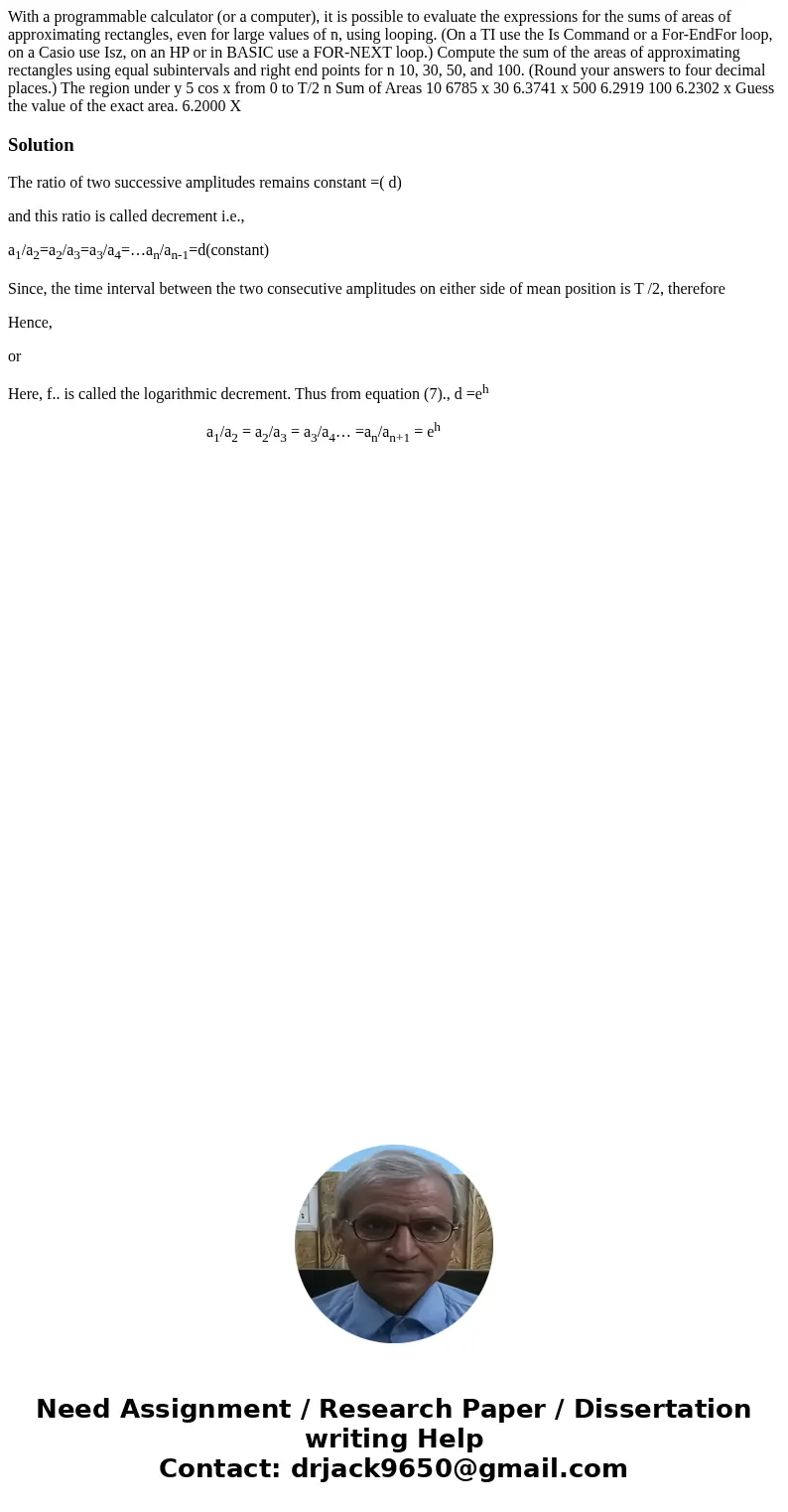With a programmable calculator or a computer it is possible
With a programmable calculator (or a computer), it is possible to evaluate the expressions for the sums of areas of approximating rectangles, even for large values of n, using looping. (On a TI use the Is Command or a For-EndFor loop, on a Casio use Isz, on an HP or in BASIC use a FOR-NEXT loop.) Compute the sum of the areas of approximating rectangles using equal subintervals and right end points for n 10, 30, 50, and 100. (Round your answers to four decimal places.) The region under y 5 cos x from 0 to T/2 n Sum of Areas 10 6785 x 30 6.3741 x 500 6.2919 100 6.2302 x Guess the value of the exact area. 6.2000 X 
Solution
The ratio of two successive amplitudes remains constant =( d)
and this ratio is called decrement i.e.,
a1/a2=a2/a3=a3/a4=…an/an-1=d(constant)
Since, the time interval between the two consecutive amplitudes on either side of mean position is T /2, therefore
Hence,
or
Here, f.. is called the logarithmic decrement. Thus from equation (7)., d =eh
a1/a2 = a2/a3 = a3/a4… =an/an+1 = eh

 Homework Sourse
Homework Sourse